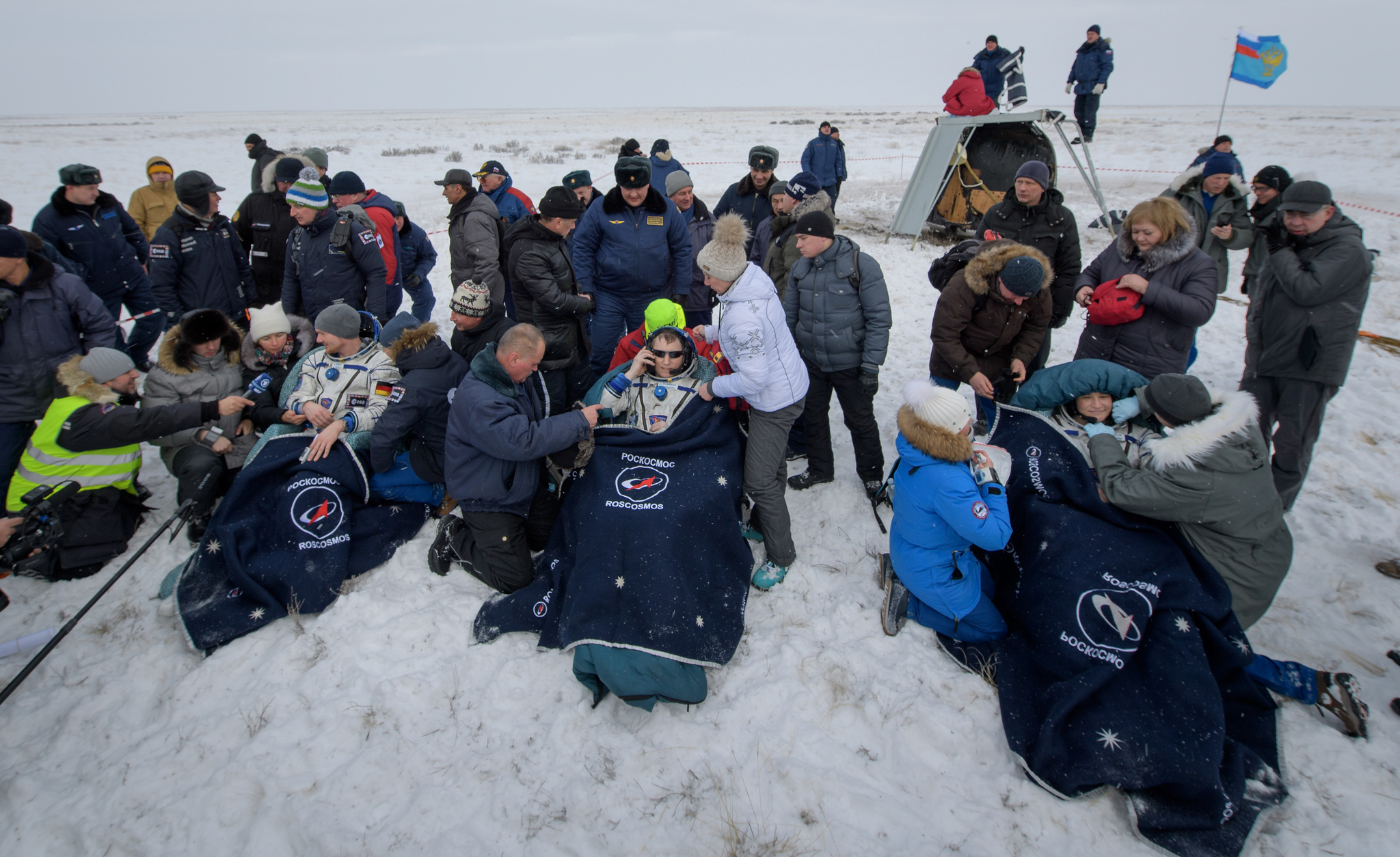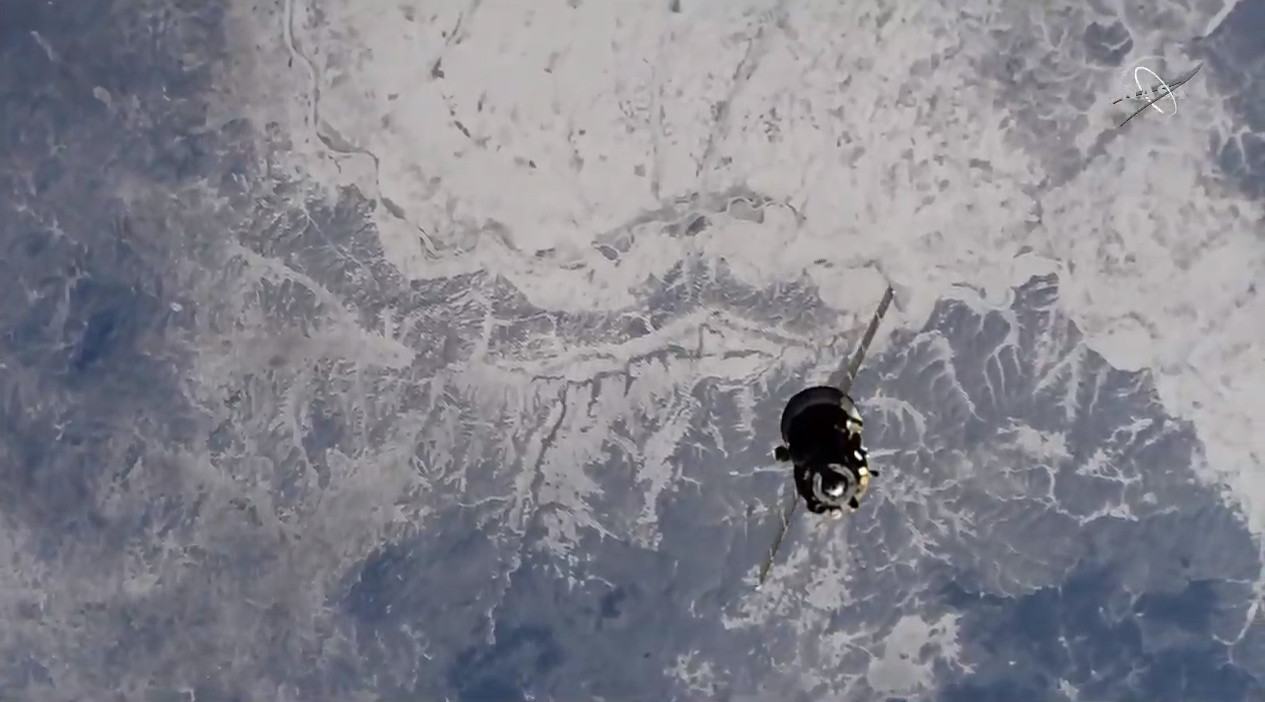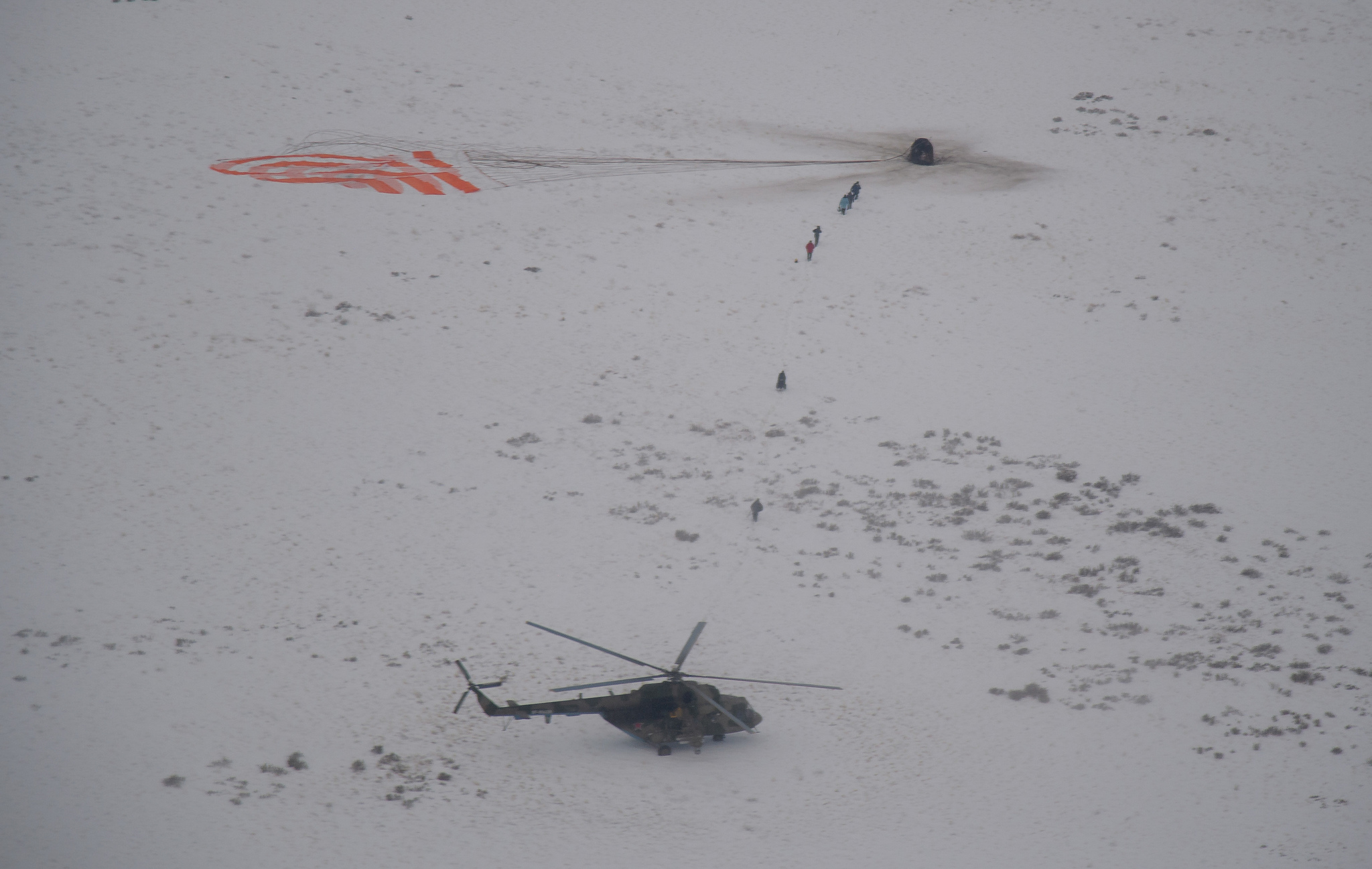Soyuz Crew Returns to Earth After a Memorable 6 Months in Space
Three space station crewmembers returned to Earth today (Dec. 20) after a remarkably eventful stay aboard the orbiting laboratory.
NASA astronaut Serena Auñón-Chancellor, German astronaut Alexander Gerst of the European Space Agency and Russian cosmonaut Sergey Prokopyev safely touched down on the snowy steppe of Kazakhstan at 12:02 a.m. EST (0502 GMT), one minute ahead of schedule. The trio spent a total of 197 days in space working as part of Expeditions 56 and 57.
"The Soyuz MS-09 stuck the landing on the eve of the 50th anniversary of humankind’s first voyage to the moon," NASA TV commentator Rob Navias said during a live webcast of the landing, referring to the Apollo 8 mission that launched on Dec. 21, 1968. [Expedition 57: The Space Station Mission in Photos]

The astronauts returned to Earth in the same Soyuz crew capsule that brought them to the International Space Station (ISS) in June — and the same spacecraft that sprang a mysterious air leak almost halfway into the crew's mission. After finding and sealing the air leak, the crew may have dealt with enough unexpected drama for one mission. But just six weeks later, a harrowing aborted launch of two of their intended Expedition 57 crewmates threw them for a loop.
Both the leak and the aborted launch served as a reminder that the now-seemingly routine job of an astronaut is still inherently risky and that it's good to be prepared for anything that can happen while in space. Thankfully, the leaking Soyuz posed no threat to the passengers on their way home. The hole was located in the spacecraft's orbital module, which separates from the crew capsule and burns up in Earth's atmosphere before landing.

Since the leak was discovered, on Aug. 29, NASA and Roscosmos — the Russian space agency that builds and launches Soyuz spacecraft — have yet to figure out exactly how the tiny, 2-millimeter (0.08 inches) hole got there. Because the hole looked like it could have been drilled, Roscosmos suggested that human error or even sabotage could be to blame.
While the Roscosmos chief implied that the incident may have occurred during the spacecraft's assembly, there was widespread speculation that one of the crewmembers could have drilled the hole while in space. But NASA astronaut Drew Feustel, the ISS commander at the time, was quick to shoot down that idea and defend the integrity of his crewmembers.
Get the Space.com Newsletter
Breaking space news, the latest updates on rocket launches, skywatching events and more!

With the Soyuz leak investigation still underway, the ISS crew was gearing up for the arrival of two new roommates — NASA astronaut Nick Hague and Russian cosmonaut Alexey Ovchinin — when their next big nightmare happened. A couple minutes after the duo lifted off in their Soyuz MS-10 spacecraft, the Soyuz rocket failed and triggered the emergency abort system. The launch failure sent the crew capsule falling ballistically toward Earth.
Hague and Ovchinin survived the emergency landing. Unfortunately, the incident left the ISS short two crewmembers, which meant that there would be fewer hands on deck to work on the hundreds of science experiments going on at the orbiting lab. The crew was short-handed for about seven weeks, until the next crewed Soyuz mission arrived, with NASA astronaut Anne McClain, Russian cosmonaut Oleg Kononenko and Canadian Space Agency astronaut David Saint-Jacques.
While the crew of the Soyuz MS-09 had to endure some stressful experiences in orbit, their mission also had its highlights. Gerst turned out to be an avid photographer during his time in space, capturing some spectacular photos and videos while in orbit. His space-photography portfolio now includes some amazing auroras, multiple hurricanes and even rockets launching into space.
Prokopyev successfully completed two spacewalks with his Russian crewmembers. During his first spacewalk, in August, he and Oleg Artemyev tossed small satellites into orbit and installed some science equipment outside the station. Then, on Dec. 3, Prokopyev went back outside the station, this time with Kononenko, to inspect the patched-up Soyuz hole — a process that involved dramatically stabbing the spacecraft with a large space knife.
During Expedition 56/57, the International Space Station received a total of six cargo shipments packed not only with science experiments, but also with plenty of goodies like ice cream and the "world's strongest coffee." The most recent delivery, a SpaceX Dragon capsule, brought along some Christmas goodies, too. Another SpaceX Dragon, which arrived at the ISS shortly after the MS-09, brought along a special artificial-intelligence robot called CIMON, which is short for "Crew Interactive Mobile Companion." Gerst had the privilege of being the first person to talk to CIMON in space.
As per protocol, the astronauts on these missions got to take most holidays off from work to relax, phone their families and participate in traditional holiday activities, like eating turkey on Thanksgiving, putting an elf on the shelf before Christmas and even dressing up like Darth Vader for Halloween. Now that the crew is back on the ground, they'll spend the holidays like Earthlings again.
Email Hanneke Weitering at hweitering@space.com or follow her @hannekescience. Follow us on Twitter @Spacedotcom and on Facebook. Original article on Space.com.
Join our Space Forums to keep talking space on the latest missions, night sky and more! And if you have a news tip, correction or comment, let us know at: community@space.com.

Hanneke Weitering is a multimedia journalist in the Pacific Northwest reporting on the future of aviation at FutureFlight.aero and Aviation International News and was previously the Editor for Spaceflight and Astronomy news here at Space.com. As an editor with over 10 years of experience in science journalism she has previously written for Scholastic Classroom Magazines, MedPage Today and The Joint Institute for Computational Sciences at Oak Ridge National Laboratory. After studying physics at the University of Tennessee in her hometown of Knoxville, she earned her graduate degree in Science, Health and Environmental Reporting (SHERP) from New York University. Hanneke joined the Space.com team in 2016 as a staff writer and producer, covering topics including spaceflight and astronomy. She currently lives in Seattle, home of the Space Needle, with her cat and two snakes. In her spare time, Hanneke enjoys exploring the Rocky Mountains, basking in nature and looking for dark skies to gaze at the cosmos.









